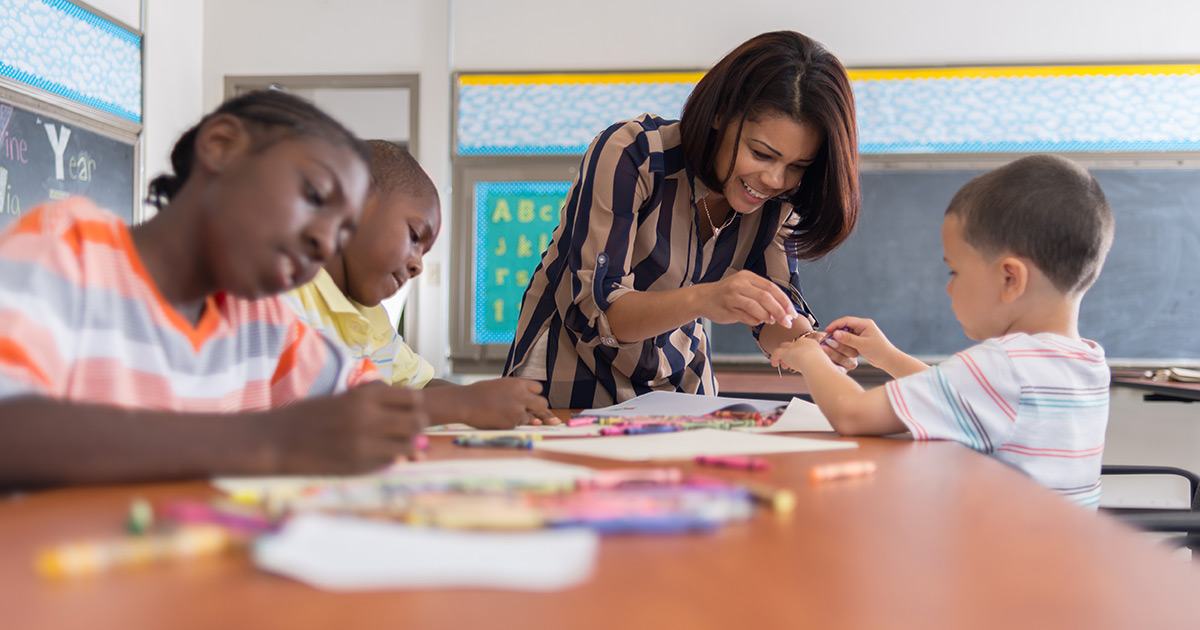
The American Dream depends upon the belief that, regardless of your background, if you work hard enough you can achieve your goals. But extensive research has shown that income does impact student success. As educators, what can we do about this national issue? Read on to find out how one Portland school addressed the challenge.
Research on the achievement gap and learning outcomes
In 1966, sociologist and researcher James Coleman published the results of a landmark survey of the U.S. educational system titled “Equality of Educational Opportunity” and later renamed it “The Coleman Report.” It was the first to document the achievement gap between African-American children and their white counterparts.
“The Coleman Report” was also the first to suggest that family background appeared to be “the biggest determinant of how well a child would learn,” according to Elizabeth Evitts Dickinson in 2016. The importance of family background “has remained a solid empirical finding” for more than five decades, Stephen L. Morgan and Sol Bee Jung found in 2016.
By controlling for the sociodemographic characteristics used to select children and families who enrolled, a 2018 longitudinal study by Robert C. Pianta and Arya Ansari examined the performance of more than a thousand children enrolled in private schools, including low-income children, and determined that family income is the best predictor of children’s learning outcomes. “It’s family background before the child even goes to school in kindergarten,” Pianta found.
This conclusion — underscoring the importance of early learning — is supported by myriad other research as to the long-term positive impact early childhood education can have on lifetime success, particularly for those children in low-income families, according to Lawrence Schweinhart, Jeanne Motie, Zongping Xiang, W. Steven Barnett, Clive Belfield, and Milagros Nores in 2005.
“All families? Schools don’t matter? That hardly seems the case,” according to Karl Alexander in 2016. A groundbreaking, historical study of schools in California that have overcome high poverty to achieve high performance strongly advises educators that socioeconomic level should not be a factor in setting expectations for learning.
Instead, the focus should be on high expectations and communicating them to children, who will, in turn, work hard to meet those expectations. In addition, the documented impact that high-quality early childhood education has on the overall development of children from low-income families is further evidence that positive educational and life outcomes can be profoundly impacted through the combination of effective teachers, the school working together with the family – and the community.
An education model that addresses these issues
Exemplifying this collective approach to closing the opportunity gap — effective teachers and ongoing, productive engagement among the school, families, and the community — is the landmark “3toPhD®” collaboration among Concordia University-Portland, Portland Public Schools’ Faubion School, Trillium Family Services, Basics (formerly Pacific Foods), and Kaiser Permanente.
A safer, healthier, and better-educated community is the goal of this innovative alliance with families, the school, and the community. PreK-8 Faubion School, firmly rooted in the 3toPhD® initiative, offers an educational prototype that addresses inequities in learning beyond preschool.
From prenatal care during the first trimester (3) to pursuing your highest dreams (PhD), the 3toPhD® model restores school as the heartbeat of the community and includes wraparound services for children and families: early childhood education, health and wellness programs, STEAM (science, technology engineering, arts, and math) educational opportunities, one-on-one tutors, mentors, and coaches from Concordia.
The goal is to close the opportunity gap for the most vulnerable children and families through robust community education.
What you can do
As a teacher, you can have a direct impact on closing the opportunity gap for children of all ages, writes Brian Gatens. Schools do make a difference, and “a substantial portion of that difference is attributable to teachers,” according to Linda Darling-Hammond, 2000, and Eric Hanushek, 2016.
Dr. Mary Jane Pearson’s unique credentials as a teacher educator include chairing the California Commission on Teacher Credentialing (CCTC), the largest educator licensing agency in the U.S., during which she co-authored the research on beginning teacher support and assessment that has become the worldwide standard for the support of new teachers, known as the Beginning Teacher Support & Assessment Induction Program (BTSA Induction). In addition, Dr. Pearson was appointed by the U.S. president to serve as the regional representative for the U.S. Department of Education. In recognition of her service to education, Dr. Pearson was named California Teacher Educator of the Year. Dr. Pearson earned her PhD from the University of Kansas.
